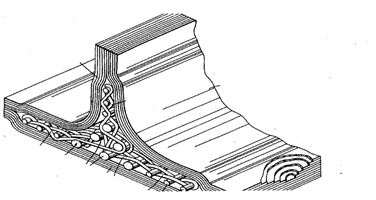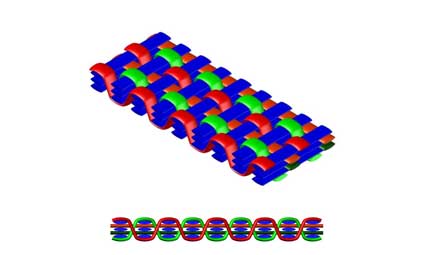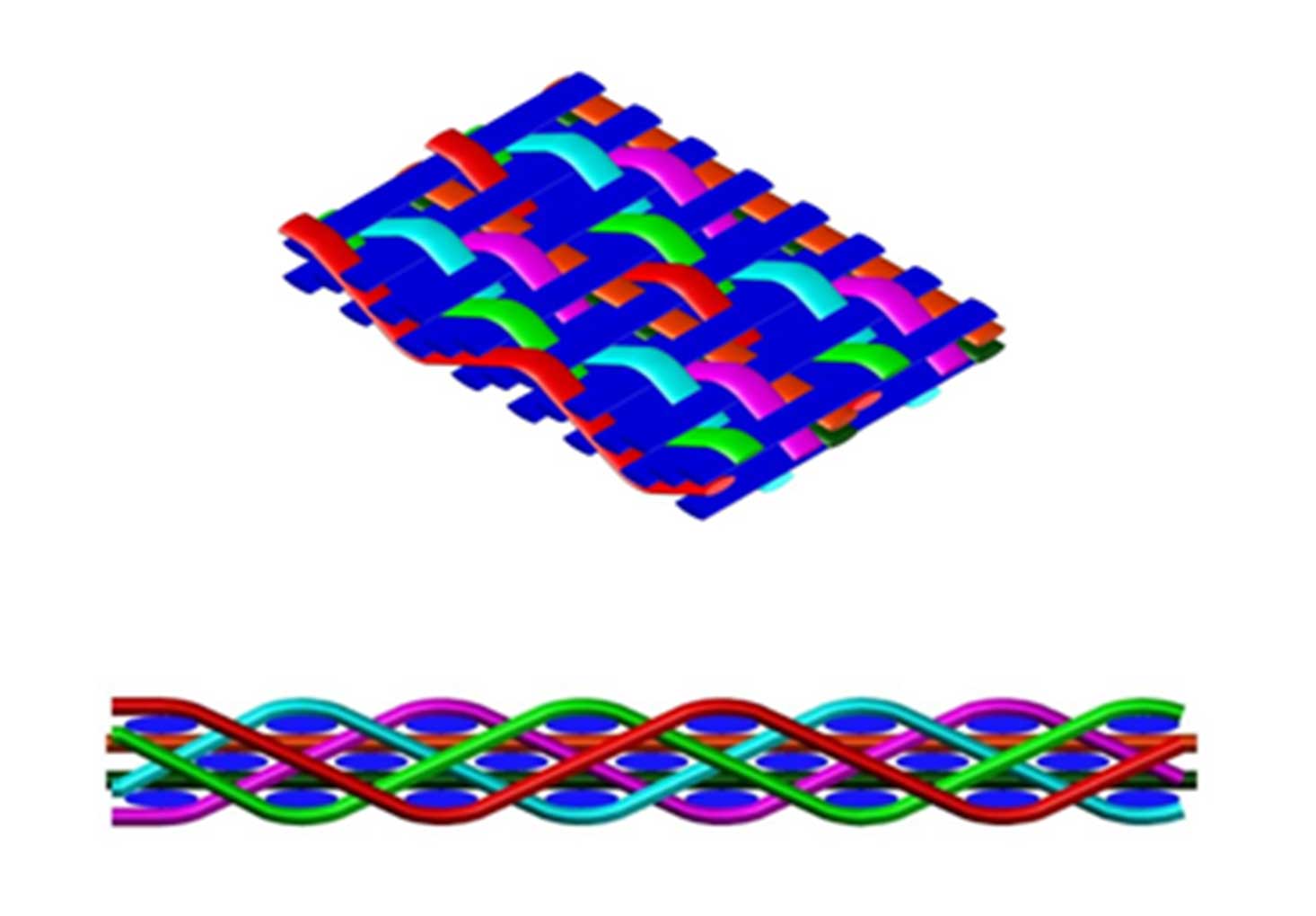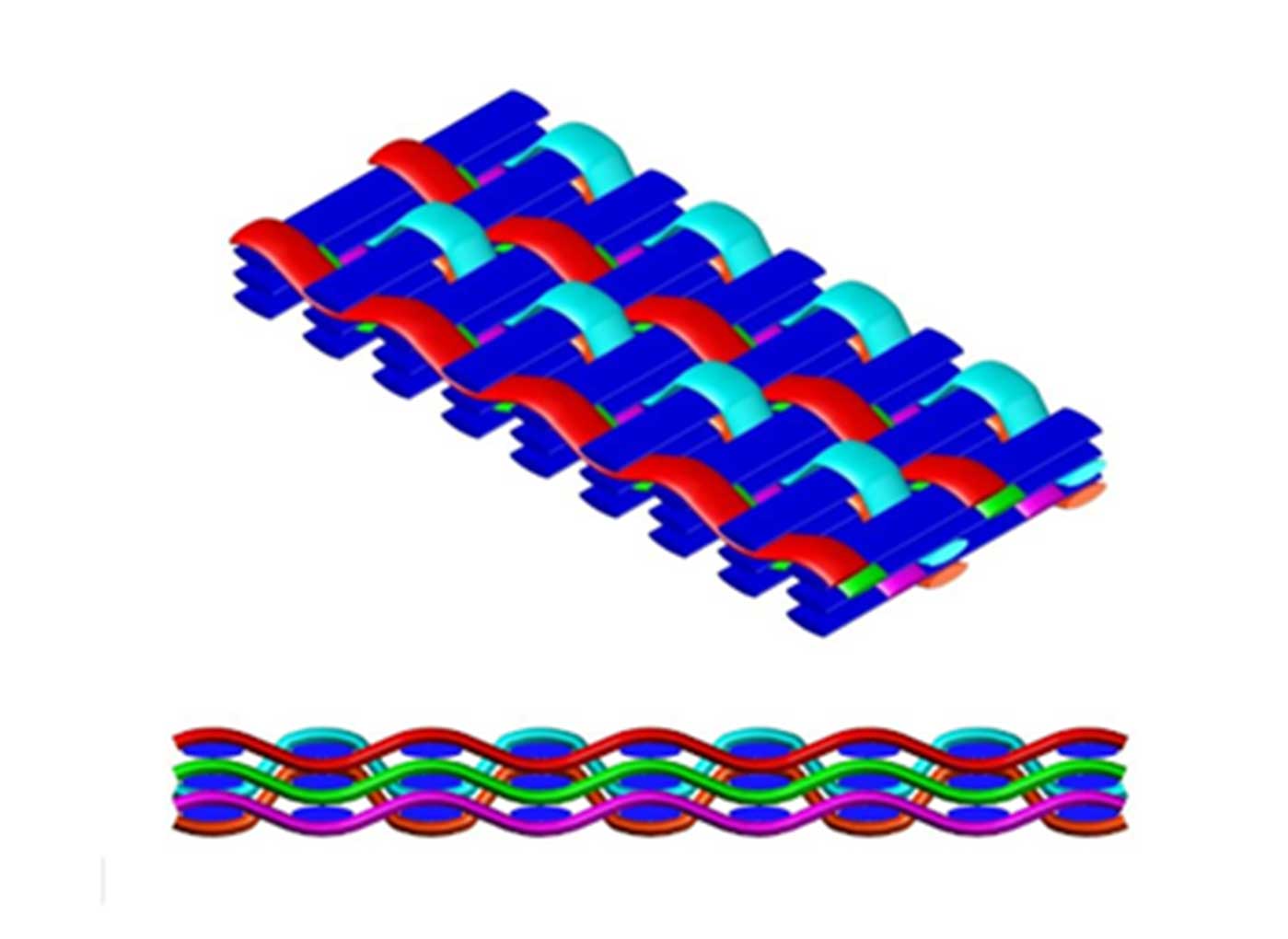All composite parts are not flat – so why should all composite fabric be flat? At Textum we realize that composite parts take many different shapes and sizes. That’s why we have worked diligently over the years to develop specialty and 3D textiles in addition to our focus on flat fabrics. Textum holds exclusive rights to multiple US and foreign patents covering 3D and shaped fabrics.
When designing and manufacturing composite components the less complicated the laminate schedule the better. Textum is an industry leader in manufacturing composite preforms and near net shape preforms by integrally weaving 3 dimensional structures. These shapes can be woven as integrated, single layer fabrics or as multi-layer fabrics. Shapes such as truss core structures, I-beams, T-beams, hat stiffeners and pi sections are examples of shapes that are possible. An example of this technology is Textum’s triangular cross section gap filler (see image to the right). Used when laminating 2-D fabrics into an I-beam or T-beam this component not only fills empty space to avoid resin rich pockets, it also helps transfer loads between the intersecting planes of fabric. Textum has significant experience with multiple yarn types and our engineers can work with your team to determine the ideal yarn spacing, yarn distribution and various design options that are optimal for your specific application.

Textum’s 3-D weaving technology allows for fabrics to be woven to a specific width, length and thickness with three directions of fiber orientation. Multiple designs are possible and they generally vary in the orientation of through thickness fibers, yarn spacing and the concentration of fiber in each weave direction. In most cases, the in-plane fibers do not interlace with each other but instead are layers of 0/90 fabric which are “stacked” on each other and held in place by through thickness (or Z direction) fibers.
These multi-layer fabrics are woven in such a way that the thru thickness yarns can be used for inter-laminar property enhancement. These fabrics can be woven up to 130 inches wide. The number of fabric layers that are “stacked” on each other depends on the weave architecture selected but typically range from 3 to 18. These fabrics fall into three categories due to the manner in which the thru thickness yarns are configured:

Thru thickness yarns are generally at ~ 90 degree orientation to the in-plane fiber layers.
All warp direction yarns traverse fully from the top surface to the bottom surface in a repeating, sinusoidal fashion. The warp yarns form a +/- fiber architecture in the warp / thru thickness plane.


Selected yarns from each fabric layer periodically interlace with an adjacent fabric layer, above and or below. There will not be any thru thickness yarns that fully traverse the thickness.
The fiber fraction in all fiber directions can be tailored with a wide degree of design flexibility. The ultimate thickness achievable will depend on the yarn denier used and the number of layers selected.
So whether you need to quickly build thickness in a part or are looking for an application specific fabric achieving very specific properties, fiber fraction volume or shapes, contact Textum today and let our engineers show you the future of 3D fabric design.